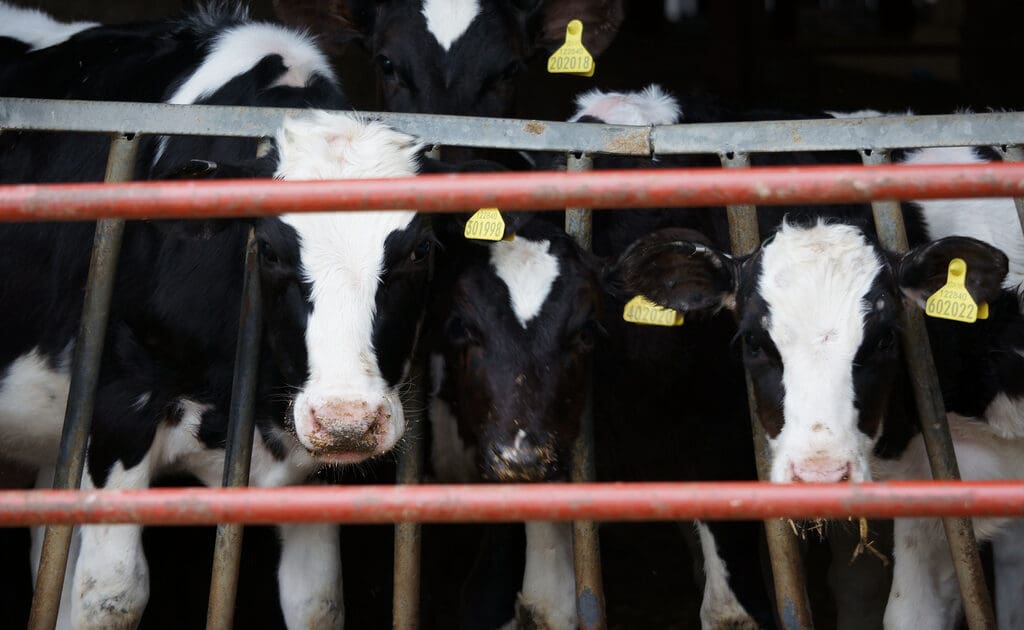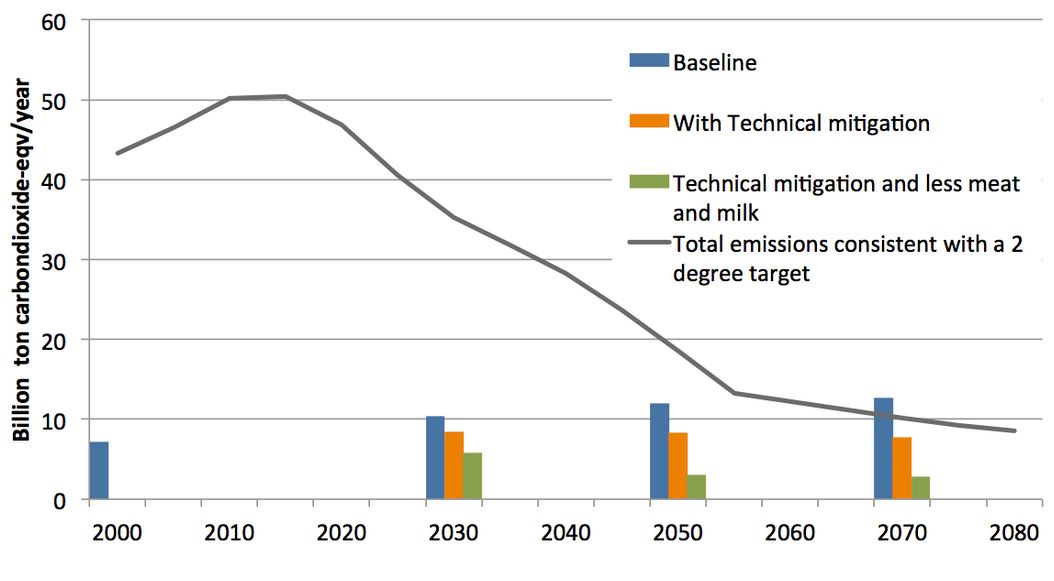Sorry, Folks: The Paleo Diet is Causing Global Warming

Global warming, or “climate change” if you prefer to use the glossed over term created by marketing executives to make it sound less offensive, is a pretty offensive situation, no matter what you call it.
Climate-deniers, this article is not for you. . . unless, you know, you’re finally ready to have the talk about how the birds and the bees are all out of whack because of rising global temperatures.
Yes, global warming is doing some f-ed up stuff to the planet, like causing super storms—which are displacing millions of people from their homes—messing with mating seasons, and making it increasingly more difficult for us to turn our heads into the clouds of industrial emissions and pretend they’re as fresh and clean as the air we actually need to breathe.
And if you’re really serious about reducing the impact of global warming, there’s another big delusion that you have to let go of: the one that eating meat is good for you. That the Paleo diet is going to save your life.
Because it’s not. Research says so.
It’s not just that diets high in animal products are deleterious to your health, there’s plenty of research on that. But raising meat and dairy is so detrimental to the planet that it may not matter how much weight you lost on the Paleo diet. You’re headed for an early death if we don’t fix this climate problem, fast.
Researchers out of Chalmers University of Technology in Gothenburg, Sweden have found that “reduced ruminant meat and dairy consumption will be indispensable for reaching the 2 °C target with a high probability, unless unprecedented advances in technology take place,” they wrote in a study published in the journal Climatic Change.
That 2 °C number, in case you’re wondering, is a United Nations recommendation. The UN has said that in order to prevent all-out catastrophe on the planet, temperatures should be prevented from rising more than 2 degrees Celsius (above pre-industrial levels) in order for humanity to continue existing in its semi-civilized manner.
“To meet that target, there will have to be a sharp decrease in greenhouse-gas emissions by the end of the century. Some of the reductions must come from the energy industry, and some must hail from the agricultural realm,” reports the Atlantic Cities.
And, no, ‘grass fed’ or ‘pasture-raised’ isn’t going to be enough. There are simply too many animals being raised for consumption. The only way out is to stop eating so many animals. Period. “We have shown that reducing meat and dairy consumption is key to bringing agricultural climate pollution down to safe levels,” says Fredrik Hedenus, one of the study authors. “Broad dietary change can take a long time. We should already be thinking about how we can make our food more climate friendly.”
According to a study released last December, we would need to reduce “the global mass of 3.6 billion ruminants—which is 50 percent more than roamed the planet a half-century ago—by implementing some sort of tax-or-trade system,” reports Atlantic Cities. Yes, we’re talking about higher prices for meat and dairy products. But that too, isn’t enough.
The reality is, there are no more shortcuts. We’ve taken them already. We’ve subsidized meat into $1 hamburgers. We’ve tucked factory farms away so we don’t have to look the suffering animals in the eyes as we slaughter them by the tens of millions every day. We’ve put bacon in smoothies. Fed “nuggets” and hotdogs to innocent children who stand to inherit an inhospitable planet. We’ve processed meat and dairy so much so that it looks less offensive than it really ought to. And it’s still not enough.
Even despite industry efforts to reduce emissions of nitrous oxide and methane, the research team says much more still needs to be done. The team created a graph showing how livestock industry emissions look and are likely to change with a 75 percent reduction in consumption of meat and dairy products. The gray line indicates “how much total emissions must be reduced to meet the two degree target with large certainty,” they say, and the “distance between the bars and the line shows the total possible magnitude of emissions from energy, transport, industry and deforestation.” Have a look, and then have a salad for lunch.

Find Jill on Twitter @jillettinger
Related on Organic Authority
Someone’s Going to Punch You for that Big Mac: Global Warming to Create ‘Food Battles’
Human Meat Consumption Rises Globally
Global Warming Threatens Maine Lobsters
Image: Iain Farrell

